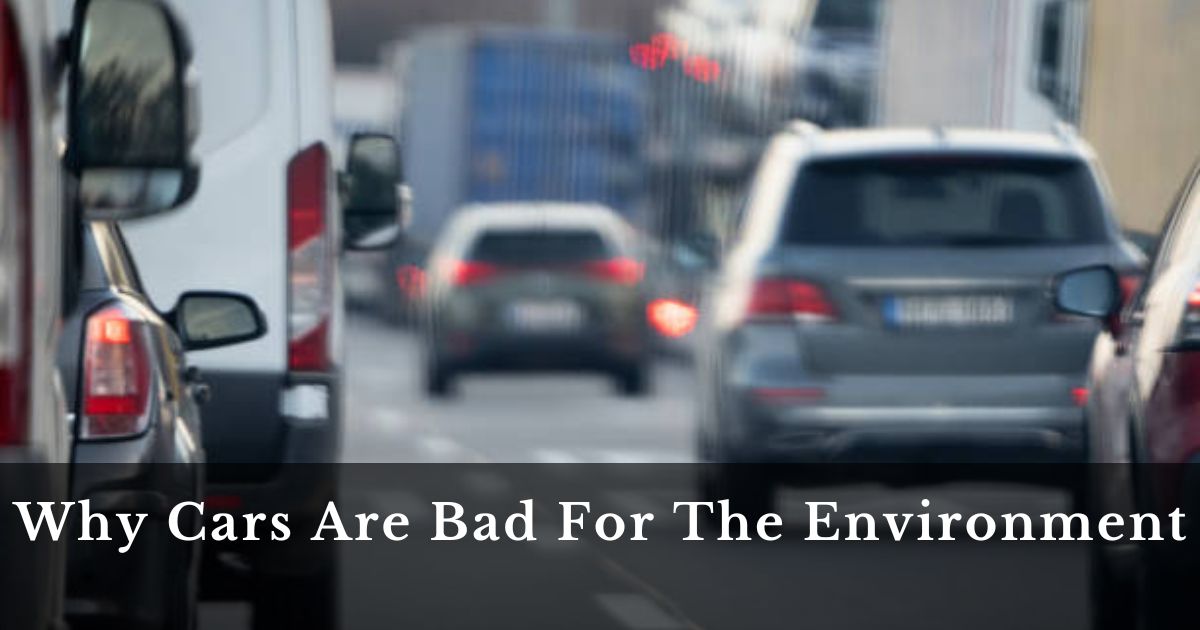Why cars are bad for the environment, Cars are harmful to the environment for a few reasons. First, they release gases that pollute the air. These gases come from burning fuel like gasoline. Second, making cars uses a lot of resources and energy, which can cause pollution too. Lastly, when cars are old and worn out, they can leak oil and other harmful chemicals onto the ground. So, cars can be bad for our planet’s health.
Cars have become an integral part of our daily lives, but their environmental impact is undeniable. From air pollution to greenhouse gas emissions, cars contribute significantly to environmental degradation.
How Cars Contribute to Air Pollution
Cars emit a variety of pollutants through their exhausts, leading to poor air quality and health problems for humans and animals alike.
Exhaust emissions
The exhaust from cars releases harmful gases and particulates into the atmosphere. These include carbon monoxide, nitrogen oxides, and volatile organic compounds, all of which are detrimental to human health.
Harmful gases and particulates
These pollutants can cause respiratory issues, heart problems, and even cancer when inhaled over prolonged periods.
Ozone formation
Nitrogen oxides and volatile organic compounds react in the atmosphere to form ozone, a major component of smog. Ozone can irritate the lungs and worsen respiratory conditions.
Health impacts
Poor air quality due to car emissions has been linked to asthma, allergies, and other respiratory diseases. It also affects the cardiovascular system, increasing the risk of heart attacks and strokes.
Greenhouse Gas Emissions from Cars
Cars are a significant source of carbon dioxide (CO2) emissions, contributing to global warming and climate change.
Carbon dioxide (CO2) emissions
Burning fossil fuels in cars releases CO2, a greenhouse gas that traps heat in the atmosphere. This leads to rising global temperatures and more extreme weather events.
Global warming
The increase in CO2 levels from car emissions is a major factor in global warming, melting ice caps, and rising sea levels.
Climate change effects
Climate change affects ecosystems, wildlife, and human communities. It disrupts natural cycles, leading to habitat loss, species extinction, and resource scarcity.
Cars and Resource Depletion
Cars rely heavily on fossil fuels, leading to resource depletion and reliance on non-renewable energy sources.
Fossil fuel consumption
The high demand for gasoline and diesel fuels depletes oil reserves, leading to higher prices and geopolitical tensions.
Oil reserves
As oil reserves decline, there is a push towards alternative energy sources like solar, wind, and biofuels.
Alternative energy sources
Transitioning to renewable energy sources can reduce dependence on fossil fuels and mitigate environment impact.
Land Use and Habitat Destruction
The expansion of roads and infrastructure for cars leads to land use changes and habitat destruction.
Urban sprawl
The growth of cities and suburbs often leads to deforestation, loss of farmland, and fragmentation of wildlife habitats.
Deforestation
Road construction and expansion contribute to deforestation, impacting biodiversity and carbon sequestration.
Wildlife displacement
Habitat destruction forces wildlife to migrate or adapt to new environments, leading to population declines and ecosystem imbalance.
Noise Pollution from Traffic
Traffic noise from cars and trucks can be disruptive to humans and wildlife.
Effects on health
Chronic exposure to noise pollution can lead to stress, sleep disturbances, and hearing loss.
Disturbance to wildlife
Loud noises from traffic can disrupt animal communication, migration patterns, and feeding behaviors.
Alternatives to Traditional Cars
There are several alternatives to traditional cars that can reduce environmental impact.
Electric vehicles (EVs)
EVs produce zero tailpipe emissions and are powered by electricity, reducing greenhouse gas emissions.
Public transportation
Using public transportation, such as buses and trains, can reduce the number of cars on the road and decrease air pollution.
Biking and walking
Choosing to bike or walk for short trips can reduce car use, promote physical activity, and lower carbon emissions.
Policy Changes and Regulations
Government initiatives and regulations play a crucial role in reducing car emissions and promoting sustainable transportation.
Government initiatives
Many governments offer incentives for purchasing electric vehicles, installing charging infrastructure, and improving public transportation.
Fuel efficiency standards
Stricter fuel efficiency standards for cars can reduce fuel consumption and emissions.
Emission regulations
Emission regulations aim to limit the amount of pollutants released by cars, improving air quality and public health.
The Role of Individuals in Reducing Car Impact
Individual actions can make a significant difference in reducing the environmental impact of cars.
Carpooling and ridesharing
Sharing rides with others can reduce the number of cars on the road and decrease emissions.
Efficient driving habits
Practicing efficient driving habits, such as avoiding rapid acceleration and maintaining proper tire pressure, can improve fuel efficiency.
Choosing eco-friendly vehicles
Opting for fuel-efficient or electric vehicles can significantly reduce your carbon footprint.
The Future of Transportation
Innovations in green technology and sustainable urban planning are shaping the future of transportation.
Innovations in green technology
Advancements in battery technology, solar panels, and energy storage are making electric vehicles more accessible and efficient.
Sustainable urban planning
Designing cities with walkable neighborhoods, efficient public transportation, and green spaces can reduce car dependency and promote sustainability.
Community initiatives
Local communities are taking action through car days, bike-sharing programs, and advocacy for sustainable transportation options.
Cars have a significant impact on the environment through air pollution, greenhouse gas emissions, resource depletion, and habitat destruction. While the challenges are immense, there are alternatives and solutions available. By embracing electric vehicles, public transportation, and sustainable practices, we can reduce our reliance on cars and create a greener future.



